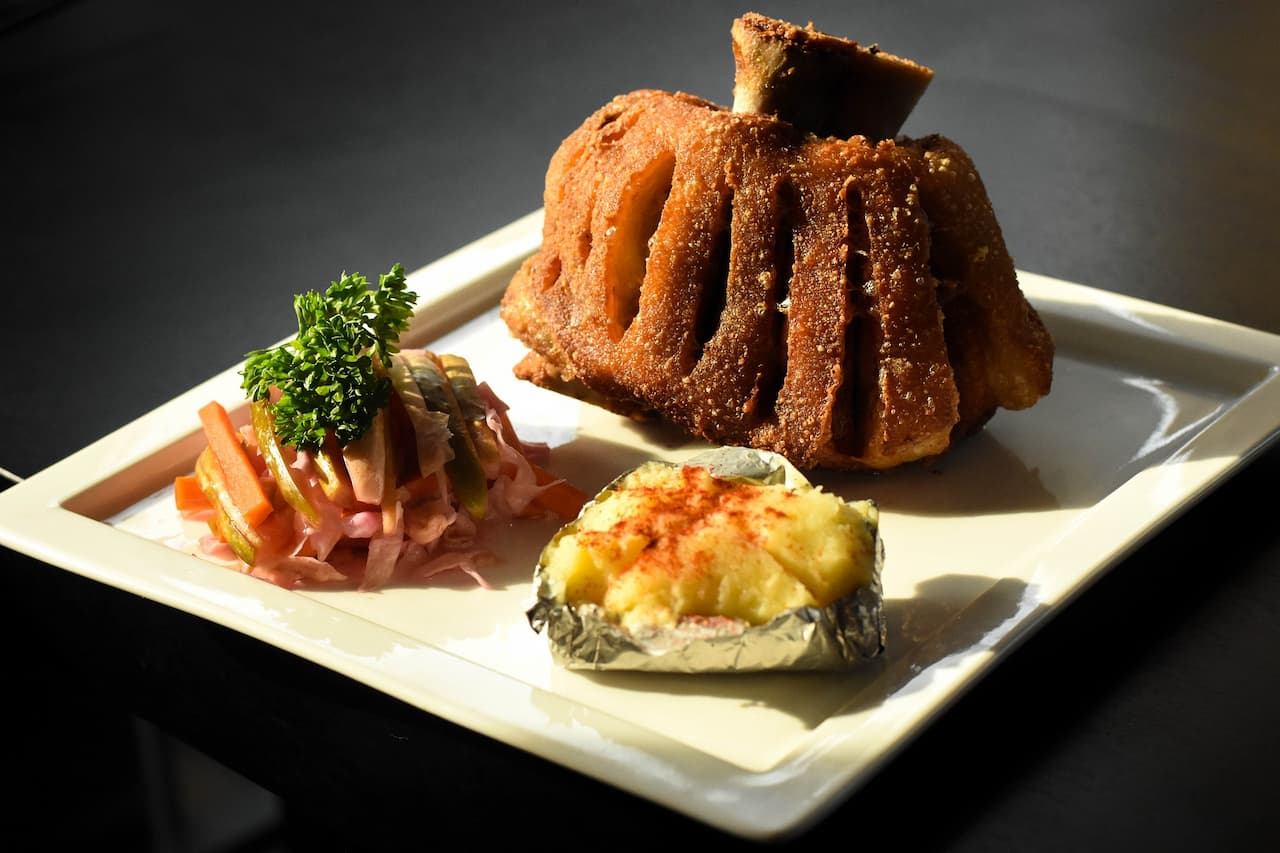In Germany, there is no such concept as “traditional German cuisine.” Each territorial district within this country of culinary unity has its own gastronomic preferences. Can you explain the cause of this disagreement? Things are straightforward. The reason for this can be attributed to natural attributes, historical events, and neighboring nations.
In the northern region of the country, commonly consumed foods include potatoes, fish (particularly trout and eel soup), rye bread, fried eggs with minced beef, and beets. Vegetable dishes are commonly consumed in the western region of the country. The reason for this can be attributed to France. The southern region of the country has a variety of flour-based food items, such as noodles, wheat bread, and dumplings. This region of Germany is known for its Swabian cuisine, featuring savory dumplings and meat dishes. The menu includes dishes such as snail soup, fried pork with a crust, and pretzels with salt, which are highly rated. I agree, the dishes are visually appealing. East Germans enjoy a variety of dishes, including black pudding with raisins, apples and beans, as well as traditional Ukrainian cuisine such as solyanka and dumplings.
German Sausages and Sausages are Popular Staples of German Cuisine
This is a source of national pride. It should be noted that there is a significant variety of sausages available in this particular country that is not found elsewhere. Germany produces over 1.5 thousand types of meat products, according to experts. Many countries acknowledge German sausages as being among the most delicious in the world. According to German beliefs, Bavaria is renowned for producing top-quality sausages.
White sausages are the most well-known product of Bavaria’s sausage production and were first consumed by Bavarians in 1857. Since then, the ingredients used to prepare them have been fresh pork and veal. The dishes are enhanced with a variety of spices, herbs and crushed ice to create a balanced and cohesive flavor profile. The sausages are heated in water at a consistent temperature of 80 degrees, rather than just being boiled.
Sausages seasoned with cheese have gained global popularity for their suitability to accompany beer. In contrast, their main purpose is different in Germany. White sausages are frequently used in the preparation of various dishes, including salads, sandwiches, soups, and main courses.
The age difference between Nuremberg fried sausages and Bavarian sausages is up to 500 years. The initial testing occurred in the year 1313. It should be noted that Johann Wolfgang Goethe had a strong affinity for this particular delicacy. Marjoram-flavored fried sausages are widely available in Nuremberg, with even specialized street stalls dedicated to their sale. In Germany, it is common to consume sausages with hot sauerkraut, bread, and beer.
In Germany, various types of meat products are commonly consumed, not limited to sausages made from carefully chosen meat. Liver sausages, raw smoked sausages, and black pudding are commonly consumed in this region.
Sauerkraut
Sauerkraut is recognized as Germany’s national dish, which may be unexpected to some. The word “Kraut” originated in German, and entered the English language as a term for tops and cabbage. In the early 20th century, the English began using the word “Krauts” as a joking term for Germans.
The German supermarket has a wide selection of cabbage products. Different types of cabbage, including white, Brussels, color, Savoy, broccoli and kohlrabi, are available at different times throughout the year. Sauerkraut seasoned with oil or wine is a common dish found on German tables throughout the year, with its popularity remaining consistent. The consumption of sauerkraut and stewed cabbage in Germany has experienced a slight decrease in recent years. However, despite this fact, the vegetable remains a popular choice as a side dish in German cuisine.
Stolle Pies
Following a satisfying meal in Germany, it is appropriate to indulge in a sweet treat. The desserts offered here are diverse and delicious, including cakes, pastries, mousses, and the well-known Stolle pies that are sure to please even the most discerning palate with their flavorful filling.
German cuisine offers a wide variety of pie recipes with various fillings such as apples, pears, cherries, plums, berries, and cottage cheese. The delicate dough can also be enriched with nuts or chocolate. Additionally, these delightful confections are adorned with whipped cream or delectable cream. The preference and appetite of the individual determine the outcome.
Bavarian Beer Soup
To prepare this dish, gather 150 g of processed cheese, 150 g of hard cheese, 200 g of hunting sausages, 1 liter of dark beer, 1 head of onion, and vegetable oil, salt, and pepper to taste.
To make Bavarian soup, it is necessary to heat a cauldron or deep pot with vegetable oil over medium heat. Before heating the cauldron, it is necessary to dice the onion into small pieces. Proceed to fry it until it has achieved a golden brown color. Afterward, slice the sausages into rings that are 5 mm thick and combine them with the fried onions. Continue cooking the onions and sausages on the heat for an additional 5 minutes. Afterwards, add dark beer to the pot and wait for it to come to a boil. Once the beer reaches boiling point, it is necessary to include pre-cut hard and processed cheese into the pot. Allow the cheese to fully melt before sampling the soup. If the dish contains the appropriate amount of salt and spice, it can be considered fully prepared. The recommended way to serve Bavarian soup is in earthenware cups and at a hot temperature.
German cuisine, particularly Bavarian cuisine, offers a diverse selection of delicacies with distinctive flavors. The reviews from the majority of guests in the country provide evidence of this.




